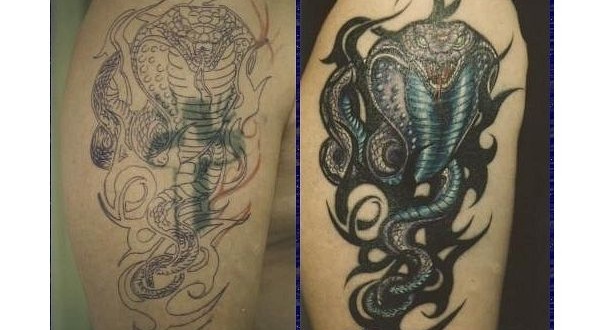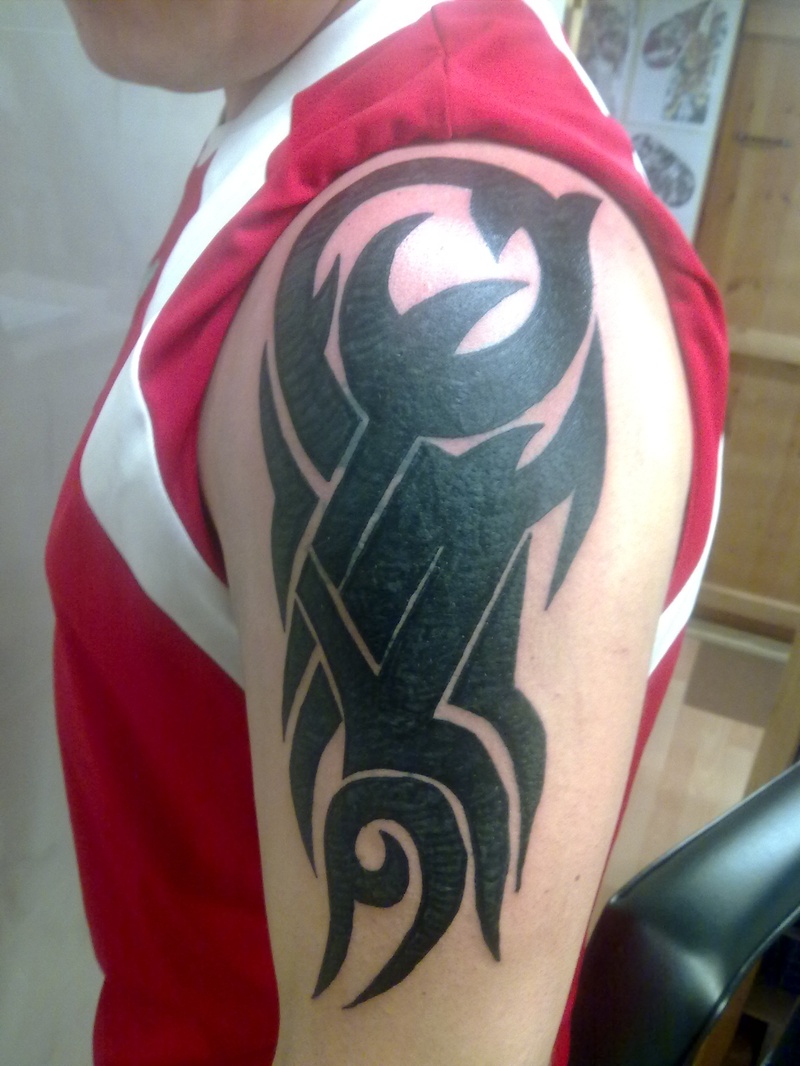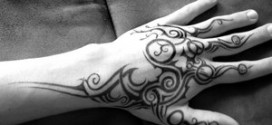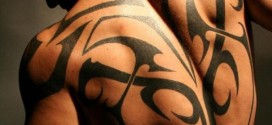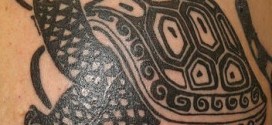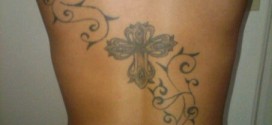Tribal tattoos refer to the tattoos of tribal, warrior races and modern derivative designs that are influenced by ancient art. The modern word “tattoo” has its origins in the tribal Samoan word “tatau”. The first written reference to tribal tattoos is in the journal of Joseph Banks, an 18th century biologist and naturalist who travelled with Captain Cook aboard the HMS Observer. Banks wrote, “I shall now mention the way they mark themselves indelibly” and described how Pacific Islanders marked their skins with inks.. The tribal tattoos described by Joseph Banks had by then been a tradition of the Samoan people for centuries.
The History of Tribal Tattoos
Tribal tattoos have existed for centuries, as indelible markings inked into the skin. On every continent, evidence has been found that reveals that tattoos were a part of almost every ancient culture. Tribal peoples all over the world created tattoo cultures independently of each other, which means that each continent has its own unique style of body art. Sometimes these ancient body markings used inks and powders to give the tattoos color, but often the tattoos were a form of decorative scarification.
Great Britain takes its name from the art of tattooing. The tribal name Briton can be translated literally as people of the designs. The Picts, another ancient British tribe, were named so because of their tattoos. Picts means painted people. The art of tattooing became even less popular during the rise of Christianity in the west. It was only when Europeans began to explore the world, discovering tattoo art on other continents, that tattoos once again became popular in western countries. Up until the late 20th century, tattoos were considered taboo in many European social classes, and were worn mostly by sailors, prisoners and soldiers. Traditional British tattoos that are popular these days generally take their form from Celtic designs. The Celts were an ancient European race made up of hundreds of tribes stretching from the British Isles across the Mediterranean. The art work of these tribes is very popular as tattoo designs, especially the Celtic cross and Celtic knots. These lattice work designs are often worked into image of trees, birds or symbols to add an ancient, Celtic essence to the design.
The majority of tribal tattoos that are popular today have their origins in the tattoos of island people such as the Samoans. Samoan tattoos are divided into two groups, pe’a for male tattoos and malu for female tattoos. The Samoans use tattoos as a way to continue their cultural and ethnic traditions. Pe’a are large, intricate tattoos that can cover most of a man’s lower body, from the waist to the knees. Malu are not as large or as dark. These tattoo designs have existed for centuries, passed down from one generation to another.
If you are only interested in a temporary or impermanent cover-up, consider incorporating clothing or accessories into your wardrobe that cover up the design during necessary times like job interviews or formal parties. Long sleeved shirts in dark colors will mask most upper body tribal tattoos. If your tattoo is not able to be covered by clothing, invest in specially designed make-up that is specifically formulated to cover dark tattoos. The heavy foundation can be purchased to match your skin tone, though it does wear over several hours and is not typically water resistant.
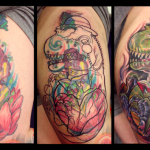 |
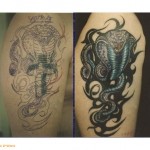 |
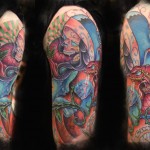 |
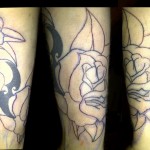 |
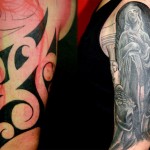 |
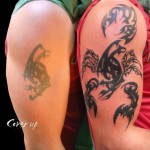 |
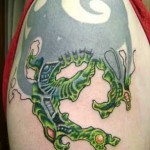 |
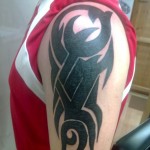 |
 Tattoo Fonts For Women and Women Tattoo Fonts Gallery For Men and Women
Tattoo Fonts For Women and Women Tattoo Fonts Gallery For Men and Women
